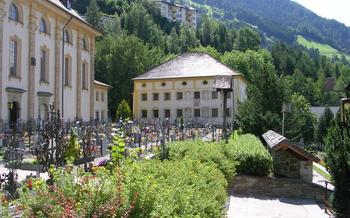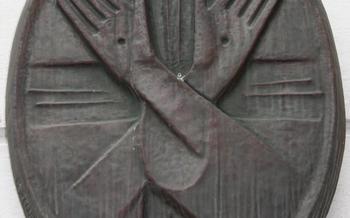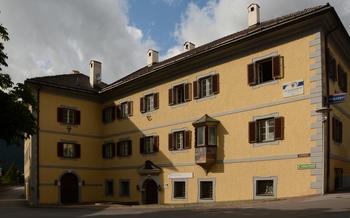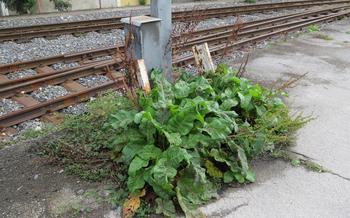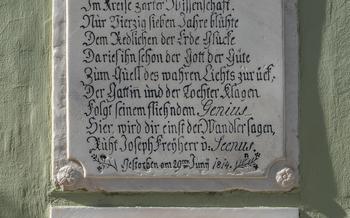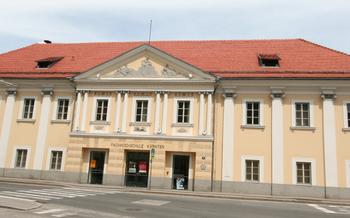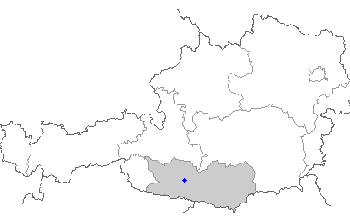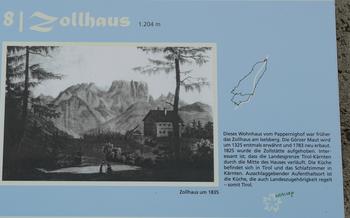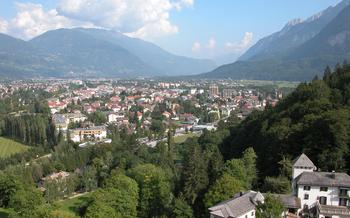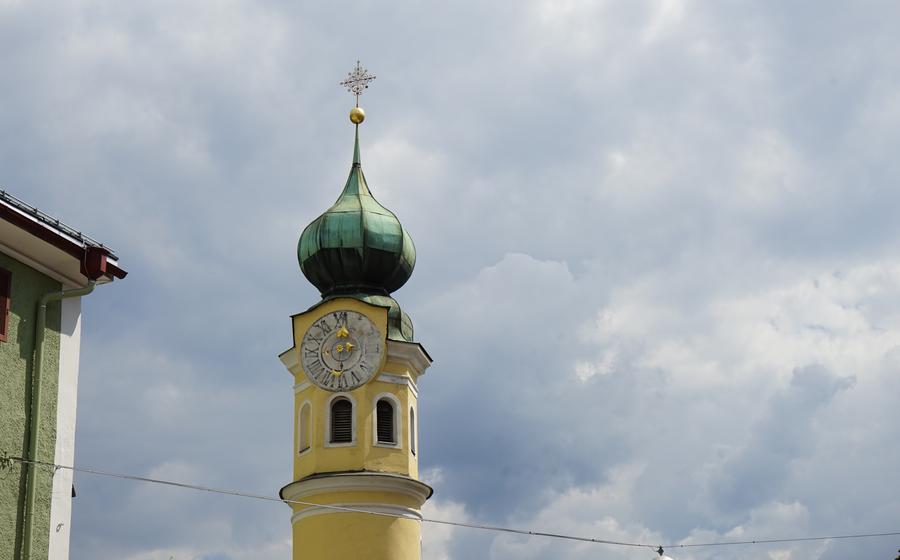
The Drau Cycle Path (Drauradweg)
- The Drau Cycle Path: A Scenic Adventure
- Breathtaking Landscapes
- Diverse Wildlife
- Culinary Delights
- Cultural Immersion
- Family-Friendly Activities
- Accommodations for Cyclist
- Bike Rental and Repair Services
- Planning Your Trip
- Safety Tips for Cyclists
- Must-See Attractions Along the Path
- Unique Experiences
- Local Customs and Etiquette
- Sustainable Travel Practices
- Insider Tip: Hidden Gems
The Drau Cycle Path: A Scenic Adventure
History of the path
Nestled in the heart of the Eastern Alps, the Drau Cycle Path (Drauradweg) winds its way through the picturesque landscapes of Austria, tracing the course of the Drau River. This iconic cycling route holds a rich history dating back to the late 19th century when it was first conceived as a means to connect the region's towns and villages. In the years that followed, the path underwent several expansions and improvements, culminating in its current form as a well-developed and widely acclaimed cycling trail.
Length and route
Spanning approximately 366 kilometers (227 miles), the Drau Cycle Path offers a diverse and captivating journey for cyclists of all levels. Beginning in the historic town of Lienz, situated at the confluence of the Drau and Isel rivers, the path meanders through the idyllic Tyrolean countryside, passing through charming villages, lush meadows, and towering mountains. Along the way, cyclists can explore the region's rich cultural heritage, visit ancient castles, and indulge in the local culinary delights.
Difficulty level and duration
The Drau Cycle Path is generally considered to be a moderate route, suitable for cyclists with varying levels of experience. The path is mostly flat, with only a few gentle gradients, making it accessible to families and casual riders. The entire route can be completed in approximately 7-10 days, allowing cyclists to immerse themselves in the region's beauty and tranquility at a leisurely pace. However, the duration can be adjusted to suit individual preferences and fitness levels, with many opportunities to stop and explore the surrounding attractions.
Breathtaking Landscapes
The Drau Cycle Path is a visual feast, offering a kaleidoscope of stunning landscapes that will leave you breathless. As you pedal along the pristine Drau River, the majestic Alps rise up on either side, their snow-capped peaks piercing the azure sky. Lush forests, vibrant with the hues of pine, spruce, and fir, carpet the mountainsides, creating a tapestry of verdant beauty.
Tranquil lakes, like shimmering jewels, dot the landscape, reflecting the surrounding mountains and forests in their glassy surfaces. Charming villages, with their traditional Tyrolean architecture and colorful facades, nestle amidst this idyllic scenery, inviting you to stop and explore their rich cultural heritage.
Along the way, you'll encounter historic castles and churches, as well as remnants of ancient Roman settlements, testament to the region's rich and storied past. The Drau Cycle Path is not just a bike path—it's a journey through time, nature, and culture, offering a feast for the eyes and the soul.
Diverse Wildlife
The Drau Cycle Path offers a unique opportunity to immerse yourself in the rich biodiversity of the region. As you pedal along the river, keep an eye out for marmots, agile climbers that can often be seen sunbathing on rocks or foraging for food. These adorable creatures are a delight to watch and add a touch of charm to the cycling experience.
In the higher elevations, you may encounter chamois, graceful mountain goats that roam the rocky slopes. These agile animals are sure to impress with their surefootedness and ability to navigate steep terrain. Spotting a chamois is a special moment that will surely be a highlight of your cycling journey.
The skies above the Drau Cycle Path are home to a variety of birds, making it a paradise for birdwatchers. Keep your binoculars handy as you cycle, as you might catch a glimpse of majestic eagles soaring overhead. These powerful birds of prey are a symbol of the region's wild and untamed nature.
Along the riverbanks, you'll find a variety of waterfowl, including ducks, geese, and swans. These elegant birds add a touch of tranquility to the landscape and provide a wonderful opportunity to observe their graceful movements and interactions.
The Drau Cycle Path is not just a cycling route but also a haven for wildlife. As you cycle through the stunning landscapes, take the time to appreciate the diverse creatures that call this region home. Learning about the conservation efforts in place to protect this precious ecosystem will deepen your appreciation for the natural beauty that surrounds you.
Culinary Delights
Cycling along the Drau Cycle Path offers a fantastic opportunity to indulge in the culinary delights of Austria. From traditional Austrian cuisine to local wines and craft beers, there's something to satisfy every palate.
Traditional Austrian Cuisine: Savor the flavors of traditional Austrian dishes like Wiener Schnitzel, a crispy breaded cutlet served with potato salad or lingonberry jam. Sample hearty Tiroler Gröstl, a dish made with fried potatoes, bacon, onions, and eggs. Don't miss out on Käsespätzle, a delicious combination of cheese noodles and crispy onions.
Local Wines and Craft Beers: The region is home to several wineries producing excellent white wines like Riesling and Chardonnay. Visit local vineyards to sample these wines and enjoy the breathtaking views of the vineyards. Craft beer enthusiasts can delight in the variety of locally brewed beers, from light lagers to dark stouts.
Sweet Treats: Indulge your sweet tooth with the region's famous pastries and cakes. Strudels filled with apples, apricots, or cherries are a must-try. Sample the fluffy Salzburger Nockerl, a soufflé-like dessert served with powdered sugar. For a refreshing treat, enjoy a slice of Kärntner Reindling, a spiral-shaped cake filled with nuts and cinnamon.
Cultural Immersion
Cycling the Drau Cycle Path is not only a scenic adventure but also a journey into the rich cultural heritage of Austria. Along the way, you'll pass through historic towns and villages, each with its unique story to tell.
Lienz, the largest town on the route, boasts a well-preserved medieval center with narrow cobbled streets and colorful facades. Be sure to visit the imposing Lienz Castle, which houses a museum showcasing the region's history and culture.
Another cultural highlight is the Isel Gorge, a natural wonder carved by the Isel River. Take a leisurely walk through the gorge to admire the towering rock formations and cascading waterfalls.
Don't miss the opportunity to visit the Tristacher See lake, a picturesque spot surrounded by lush forests and towering peaks. Relax on the shores of the lake, enjoy a refreshing swim, or rent a boat to explore the crystal-clear waters.
Throughout your journey, you'll encounter numerous churches, chapels, and monasteries, each with its own unique architectural style and history. Take some time to explore these sacred spaces and learn about the religious traditions of the region.
To fully immerse yourself in the local culture, attend one of the many traditional festivals and events that take place throughout the year. These celebrations offer a glimpse into the vibrant traditions of Tyrol and Carinthia, with music, dance, and delicious food.
Family-Friendly Activities
The Drau Cycle Path is an ideal destination for families seeking an active and enjoyable vacation. The path features dedicated bike paths and rest areas, ensuring a safe and comfortable ride for cyclists of all ages. Numerous playgrounds and swimming spots along the route provide opportunities for kids to have fun and cool off during the journey. Additionally, many bike rental shops offer family-friendly bikes, including tandems and trailers, making it easy for parents to cycle with their children.
Accommodations for Cyclist
Whether you're embarking on a solo adventure or a family cycling vacation, finding suitable accommodations is crucial to ensure a comfortable and memorable experience along the Drau Cycle Path. Here are some key considerations to make:
Booking Bike-Friendly Accommodations:
- Look for hotels, guesthouses, or inns that are specifically designated as "bike-friendly." These establishments often offer amenities such as secure bike storage, repair tools, and laundry services.
Packing Essentials for a Comfortable Stay:
- Pack lightweight and quick-drying clothing suitable for various weather conditions.
- Bring a small repair kit with essential tools to fix minor bike issues.
- Consider packing a sleeping bag liner or a lightweight blanket for added comfort.
Tips for Finding Affordable Accommodations:
- Book accommodations in advance, especially during peak season, to secure the best rates.
- Consider staying in smaller villages or towns away from major tourist hubs for more affordable options.
- Look for discounts and packages offered by bike-friendly hotels or hostels.
Bike Rental and Repair Services
Renting bikes from local shops or online platforms
Renting a bike is a convenient option for cyclists who don't have their own or prefer to travel light. Numerous bike rental shops are located along the Drau Cycle Path, offering a wide range of bikes to suit all needs and budgets. From standard city bikes to high-performance road bikes and e-bikes, there's something for everyone. It's advisable to book your bike in advance, especially during peak season, to avoid disappointment. Online platforms like Bikemap and Rent a Bike allow you to compare prices and book your bike conveniently from home.
Ensuring bikes are in good condition
Before renting a bike, it's essential to check its condition thoroughly. Ensure the tires are properly inflated, the brakes work effectively, and the gears shift smoothly. If you notice any issues, don't hesitate to ask for a different bike. It's also a good idea to bring your own helmet and other safety gear, as these may not be provided with the rental.
Knowing where to find repair shops along the route
Even with the best preparation, mechanical issues can arise during a long bike ride. It's helpful to know where to find repair shops along the Drau Cycle Path in case of a flat tire or other problems. Bike repair shops are located in most towns and villages along the route, and many offer mobile repair services if needed. It's a good idea to carry a basic repair kit with you, including tools, spare tubes, and a pump, to handle minor repairs on your own.
Planning Your Trip
Before embarking on your cycling adventure along the Drau Cycle Path, careful planning is essential to ensure a smooth and enjoyable journey. Here are some key factors to consider:
-
Choose the Right Time to Visit: The best time to cycle the Drau Cycle Path is during the shoulder seasons (May-June and September-October) when the weather is pleasant, and the crowds are smaller. However, if you prefer warmer temperatures, July and August are also suitable, but be prepared for more cyclists on the path.
-
Pack Appropriate Clothing and Gear: Pack layers of clothing to accommodate changing weather conditions, including a waterproof jacket, comfortable cycling shorts, and a helmet. Don't forget your sunglasses, sunscreen, and a small first-aid kit.
-
Create a Detailed Itinerary: Plan your route in advance, considering the distance you want to cover each day, rest stops, and attractions you want to visit. The Drau Cycle Path is well-marked, but having a map or GPS device is recommended.
Safety Tips for Cyclists
The Drau Cycle Path is generally well-maintained and safe for cyclists of all levels. However, it's essential to follow basic safety precautions to ensure a smooth and enjoyable journey.
-
Helmets and Traffic Regulations: Always wear a helmet while cycling. It's mandatory in Austria and can save your life in case of an accident. Follow traffic regulations, including using hand signals, staying on the right side of the road, and yielding to pedestrians.
-
Potential Hazards: Be aware of potential hazards such as uneven road surfaces, narrow bridges, and sharp curves. Watch out for wildlife crossing the path, especially in areas with dense forests.
-
Safety Equipment: Carry basic safety equipment such as a first-aid kit, a tire repair kit, and a pump. It's also a good idea to bring a flashlight or headlamp for riding in low-light conditions.
Must-See Attractions Along the Path
The Drau Cycle Path is dotted with numerous cultural and natural attractions that beckon cyclists to stop and explore. Among the highlights is the historic town of Lienz, with its imposing castle overlooking the confluence of the Drau and Isel rivers. Take a stroll through the town's medieval streets and visit the Lienz Castle Museum to learn about the region's rich history.
Venturing further along the path, cyclists can marvel at the stunning Isel Gorge, a natural wonder carved by the Isel River over thousands of years. The gorge offers breathtaking views and is a popular spot for hiking, swimming, and fishing.
Another must-see attraction is the Tristacher See lake, a beautiful alpine lake surrounded by lush forests and towering mountains. Take a refreshing dip in the lake's crystal-clear waters or simply relax on its shores and soak in the tranquil atmosphere.
Unique Experiences
Beyond the scenic landscapes and cultural immersion, the Drau Cycle Path offers a range of unique experiences that adventurous travelers should not miss.
-
Guided Bike Tours: Enhance your cycling journey by joining a guided bike tour led by experienced local guides. These tours provide insights into the region's history, culture, and natural wonders, ensuring a comprehensive and enriching experience.
-
Boat Trip on Lake Millstatt: Take a break from cycling and embark on a tranquil boat trip across Lake Millstatt, the largest lake in Carinthia. Admire the stunning Alpine scenery from a unique perspective, spot local wildlife, and soak in the serene atmosphere of the lake.
-
Fishing and Canyoning: For those seeking more adventurous pursuits, the Drau Cycle Path region offers excellent opportunities for fishing and canyoning. Cast your line in the crystal-clear waters of the Drau River or its tributaries, or explore the thrilling gorges and waterfalls of the surrounding mountains with a guided canyoning tour.
Local Customs and Etiquette
When exploring Austria, it's essential to be mindful of local customs and etiquette to ensure a respectful and enjoyable experience. Here are a few guidelines to keep in mind:
-
Greetings: When meeting someone for the first time, it's customary to shake hands and greet them with a warm "Grüß Gott" (Hello God).
-
Tipping: Tipping is a common practice in Austria. In restaurants, a 10% tip is generally expected, while in cafes, it's customary to round up the bill to the nearest euro.
-
Language: While English is widely understood in tourist areas, making an effort to learn a few basic German phrases can go a long way in showing respect and appreciation for the local culture.
-
Respecting Queues: Austrians are known for their orderly nature. When waiting in line, whether at a store, bus stop, or attraction, it's important to stand in a single file and avoid cutting in line.
-
Noise Levels: Be mindful of noise levels, especially in public places and residential areas. Austrians generally value tranquility, so it's best to keep your voice down and avoid loud disturbances.
Sustainable Travel Practices
As a responsible traveler, it's crucial to embrace sustainable practices when exploring the Drau Cycle Path. By making conscious choices, you can minimize your environmental impact and contribute to the preservation of this beautiful region.
Choose Eco-Friendly Accommodations and Restaurants: Opt for hotels and guesthouses that prioritize sustainability. Look for establishments that use renewable energy sources, offer recycling programs, and support local initiatives. Embrace local cuisine by dining at restaurants that source ingredients from nearby farms and producers.
Minimize Waste and Use Reusable Items: Reduce plastic waste by carrying your own water bottle and reusable containers for snacks and meals. Avoid single-use plastics like straws and plastic cutlery. Opt for refillable toiletries and bring your own shopping bags to local markets.
Support Local Businesses and Initiatives: Contribute to the local economy by purchasing souvenirs and products from local artisans and businesses. Support initiatives that promote sustainable tourism, such as bike rental shops that use electric bikes or offer guided tours that focus on the region's natural and cultural heritage.
Insider Tip: Hidden Gems
While exploring the Drau Cycle Path, don't miss the opportunity to venture off the beaten path and uncover hidden gems that await discovery. As you cycle through the enchanting landscapes, keep an eye out for less-traveled side paths that lead to secluded valleys and charming hamlets. These hidden routes often offer breathtaking views and a chance to experience the true essence of the region.
In search of a refreshing dip, take a detour to secret swimming spots along the riverbanks. These tranquil oases, known only to locals, provide a perfect escape from the summer heat. Immerse yourself in the crystal-clear waters, surrounded by lush greenery and the gentle sounds of nature.
To savor the authentic flavors of the region, visit local markets that showcase fresh produce, artisanal cheeses, and homemade delicacies. Engage with the friendly vendors, learn about their products, and indulge in culinary delights that truly represent the heart of Austria. These markets are a treasure trove of local ingredients and culinary traditions, offering a unique glimpse into the region's rich food culture.
Remember, the true beauty of the Drau Cycle Path lies not only in its main attractions but also in the hidden gems that await those who dare to explore beyond the ordinary. Embrace the spirit of adventure, get lost in the tranquil countryside, and discover the secrets that make this cycling route truly exceptional.
